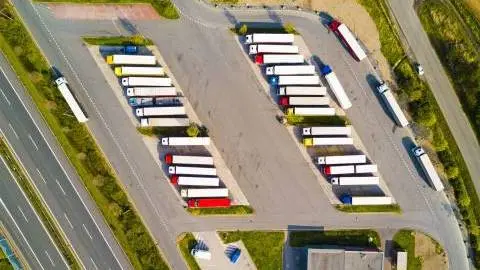European trailer market: This time is different
The European trailer market is cyclical and sensitive to economic upswings and downturns, but the relatively quick rebound of transport volumes and low stocks of new trailers have limited the downturn, creating momentum for 2021. New registrations of semi-trailers in NW-Europe are expected to recover by 8% this year which will step up in 2022
European semi-trailer fleet has grown rapidly in recent years
The European trailer fleet had around three million registered semi-trailers in 2019. In contrast to the truck fleet, trailer capacity expanded faster than European road transport demand in the years before the pandemic, and some reasons include:
- Trailer units are increasingly used as temporary storage facilities in the logistics process at warehouse sites. They are also used as stocking units, and fleet owners and rentals tend to keep several of them to remain flexible, which partly explains some natural excess capacity.
- As part of this, e-commerce has pushed up transport and storage demand. Several logistics services providers like DSV Panalpina only operate trailer capacity and Amazon has started to build up its own European trailer fleet.
- The transport market generally shows more volatility and requires the spare capacity to be able to meet peaks in demand.
Faltering transport growth curbs trailer fleet expansion

…but not much trailer fleet reduction expected
Despite alleged excess capacity in the trailer fleet, we don't expect much reduction in 2020-2021 even though second-hand prices are high.
Fleet capacity has to comply with peaks and we presume a large part of this is natural. Besides that, maintaining spare capacity entails extra costs and the market requires more flexibility which means even more volatility. Ageing of trailers is also slower than for trucks as new engine standards make no difference.
Another reason why more capacity is required is reduced efficiency - more operated trailer capacity to and from the UK is needed due to customs checks and longer roundtrips after Brexit.
NW European trailer registrations already slowed in 2019

Early cooling-off and lack of stocked units accelerate trailer market recovery
Trailer sales are usually more sensitive to the economic cycle than truck sales. Nevertheless, the 2020-decline was remarkably limited compared to earlier swings. Three main explanations for this are:
1. Trailer sales already showed a decline in 2019 in Western European countries.
2. The decline was not preceded by a wave of extra orders by fleet owners and production in stock by manufacturers. This was different from the situation at the time of the financial-economic crisis in 2009.
3. Finally, large trailer rental companies – responsible for a significant part of market demand - such as TIP and PNO started to invest again in the second half of 2020.
European trailer registrations to show moderate recovery in 2021

NW-European trailer registration to rebound some 8% in 2021
In spring 2021, registrations of new trailers started rising again in Germany and the Netherlands. This also includes catch-up investment as confidence among fleet owners returned and market prospects improved. Given the rolling start of 2021 we expect new semi-trailer registrations to recover some 8% year on year in FY21 followed by a stronger rebound in 2022.
Long delivery times drives pushes haulage companies to second-hand market and rental
Like trucks, lead times for new trailers are increasing significantly (most new orders will probably not be delivered before the start of 2022).
Trailer manufacturers have rapidly decreased production capacity in the downturn and are currently facing a scarcity of components supply while scaling up again. The purchasing managers' index (PMI) shows that lead times deteriorated further in the run-up to the summer. Chip shortages are not an immediate constraint for trailer manufacturers, but the supply of steel has been a limiting factor for some time.
As a consequence, production at Krone - a major European vehicle and machine manufacturer - remained well below pre-pandemic levels in 1Q21, driving up demand for used trailers and rental options for short term deployment.
Despite the few dominant players, a fragmented market exists
Despite some consolidation in the previous decade, the European trailer market is still fragmented with hundreds of smaller players manufacturing specialised equipment like tank trailers, bulk trailers and low loaders. For more standard trailers like curtain-siders, box trailers or coolers, Schmitz and Krone are the dominant players in the European market.
Within the standardised range of trailers, demand is gradually shifting from curtain siders to boxes for security purposes.
Schmitz and Krone cover more than half of Europe's largest trailer market

This publication has been prepared by ING solely for information purposes irrespective of a particular user's means, financial situation or investment objectives. The information does not constitute investment recommendation, and nor is it investment, legal or tax advice or an offer or solicitation to purchase or sell any financial instrument. Read more
Download
Download article
1 July 2021
Truck and trailer markets benefit from soft landing in road transport This bundle contains 3 Articles